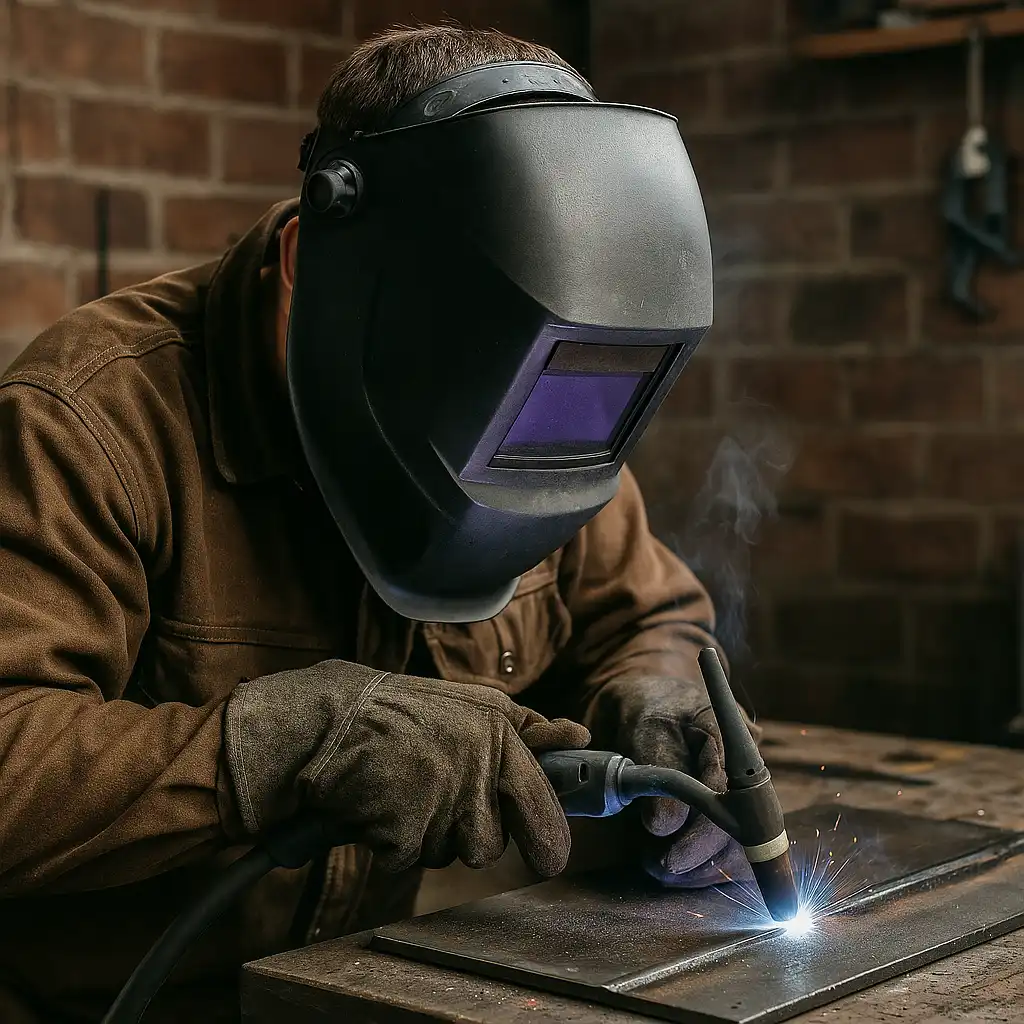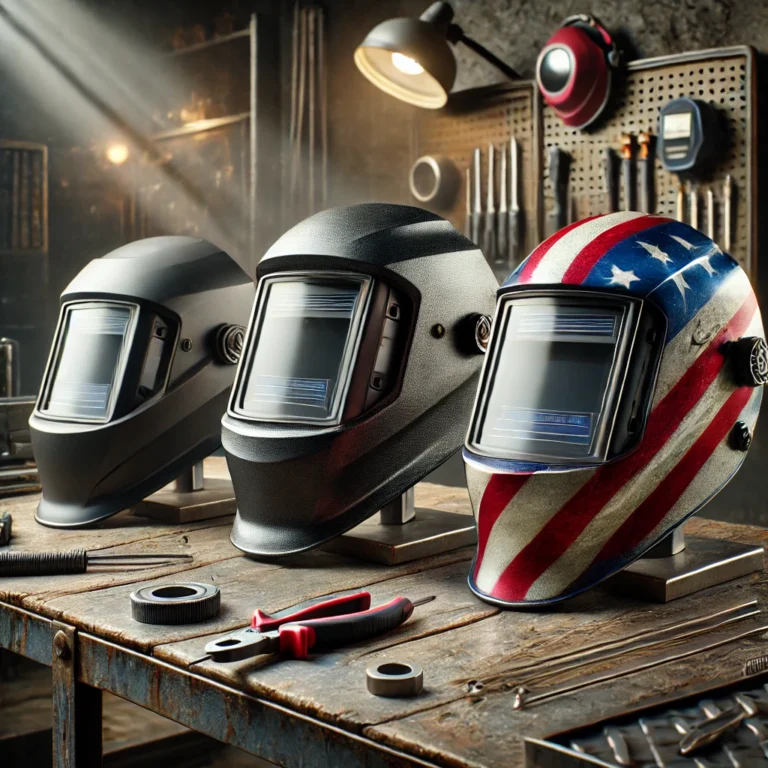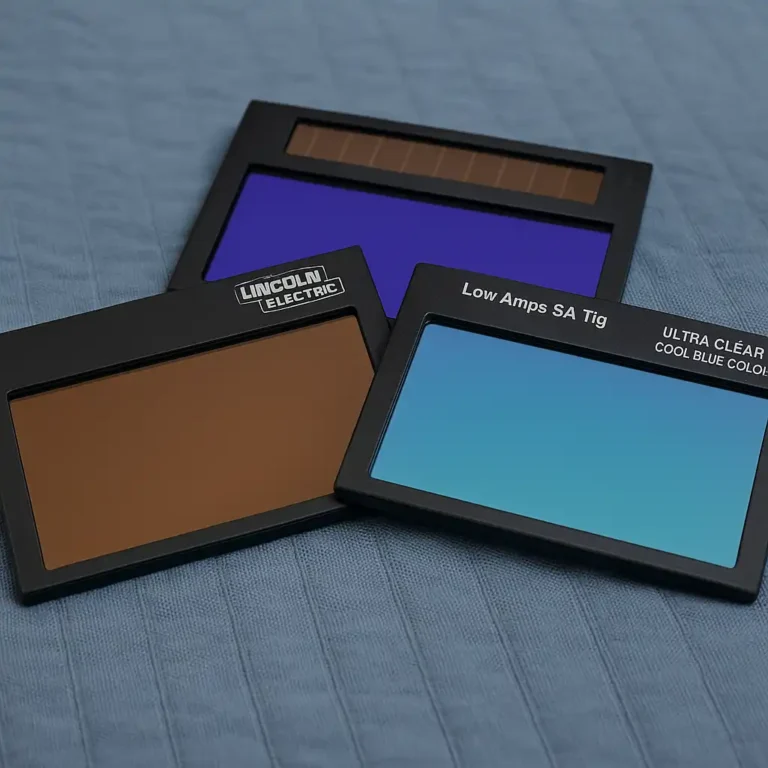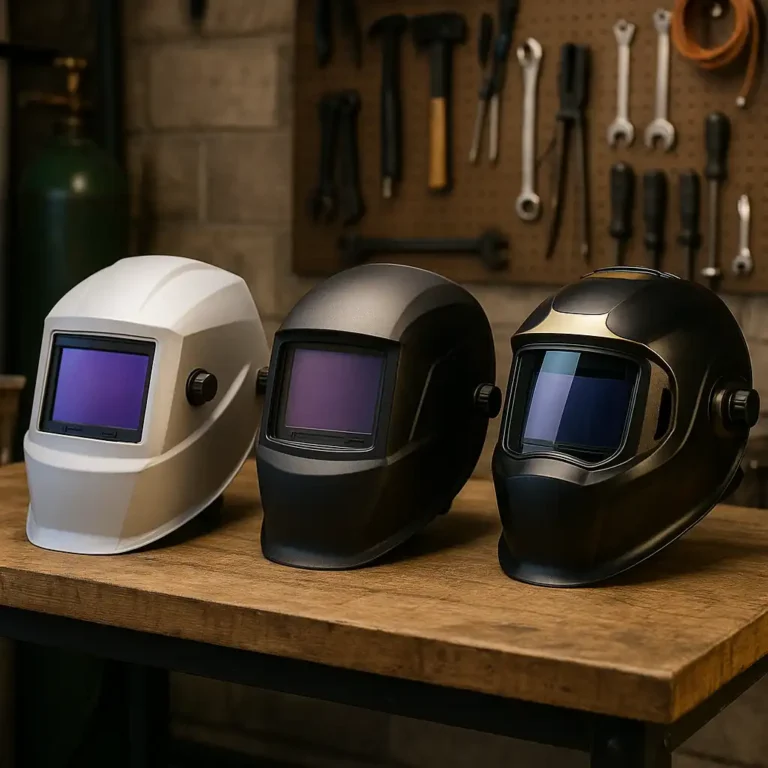Welding Helmet Lens Types – Clarity, Shade, and Safety in the Shop

Disclosure: This post contains affiliate links. As an Amazon Associate, I earn from qualifying purchases—at no extra cost to you.
Last Updated: September 18, 2025
The lens in your welding helmet does more than protect your eyes—it controls how clearly you see the puddle, how safe you stay, and how long you can weld without straining. From fixed glass to advanced auto-darkening, the lens type you pick shapes both your comfort and your weld quality.
👉 Check our complete welding helmet resource for models welders trust across different shop setups.
🔍 What Welding Helmet Lens Types Mean in Welding
You’ll usually run into four kinds of lenses: passive (fixed shade), auto-darkening, variable shade, and panoramic. Passive lenses are simple and tough. Auto-darkening lenses switch automatically when the arc strikes. Variable shade adds flexibility across different processes. Panoramic lenses widen your view of the work. Each type brings pros and cons depending on whether you’re doing stick, MIG, TIG, or outdoor jobs.
👉 For a full breakdown of protective shop gear, check out our guide to welding safety gear.
🔍 Why It Matters for Welders
The lens decides how well you see the puddle and track the arc. A clear view helps you keep your bead straight and consistent. Poor optics blur the puddle, forcing you to guess, which means more grinding and rework. The right lens keeps your eyes safer and reduces fatigue after long runs.
🔍 Common Misconceptions or Mistakes
Some welders assume auto-darkening helmets are always better, but cheaper ones may lag or fail if you’re out of position. Others dismiss passive lenses as outdated, even though they’re still reliable for heavy-duty or outdoor stick welding. Knowing the limits of each type helps you avoid these traps.
👉 If you’re comparing affordable gear, see our best welding helmets for the money for safe picks that balance cost with performance.
🔍 How to Choose or Use Them Correctly
Think about your main process before choosing a lens. Beginners often benefit from a variable shade auto-darkening lens for flexibility. TIG welders need top optical clarity and high sensitivity. Outdoor welders running stick often prefer passive lenses that can take a beating without failing.
🔍 Cost, Safety, and Value Considerations
Passive helmets are inexpensive and work well for basic welding, but auto-darkening and panoramic options cost more for good reason. They offer better visibility, faster reaction, and more comfort. Spending extra upfront usually pays for itself in fewer mistakes and longer-lasting gear.
📌 Key Takeaways
- Lens choices include passive, auto-darkening, variable shade, and panoramic
- Good optics reduce strain, improve accuracy, and boost safety
- Always pick a lens that fits your main welding process and environment
🟢 FAQs
Q: What’s the difference between passive and auto-darkening lenses?
Passive lenses hold a single shade, while auto-darkening lenses switch instantly when the arc starts.
Q: Do variable shade lenses cover all welding processes?
Yes, but check that the shade range is wide enough—especially for low-amp TIG work.
Q: How often should welding helmet lenses be replaced?
Outer covers may need swapping every week, while the main lens should be replaced once it’s scratched or cloudy.
✅ Conclusion
Welding helmet lens types aren’t just technical details—they affect your safety, your weld quality, and how long you can stay comfortable under the hood. Choosing the right lens for your process is one of the smartest decisions you can make in the shop.






